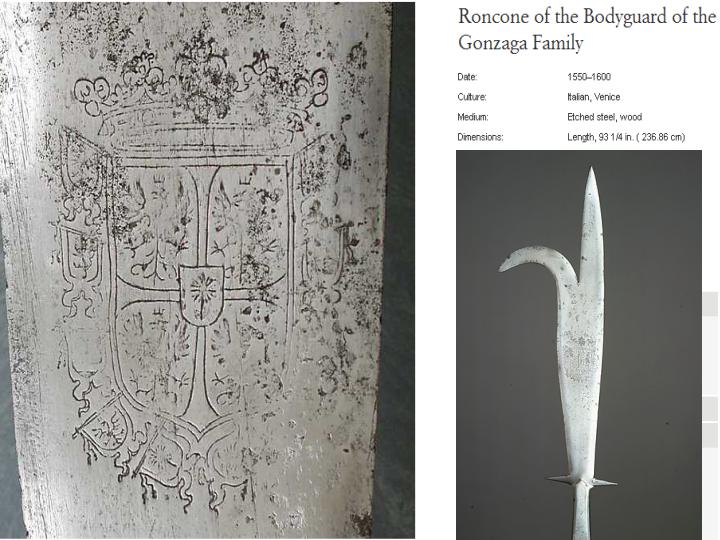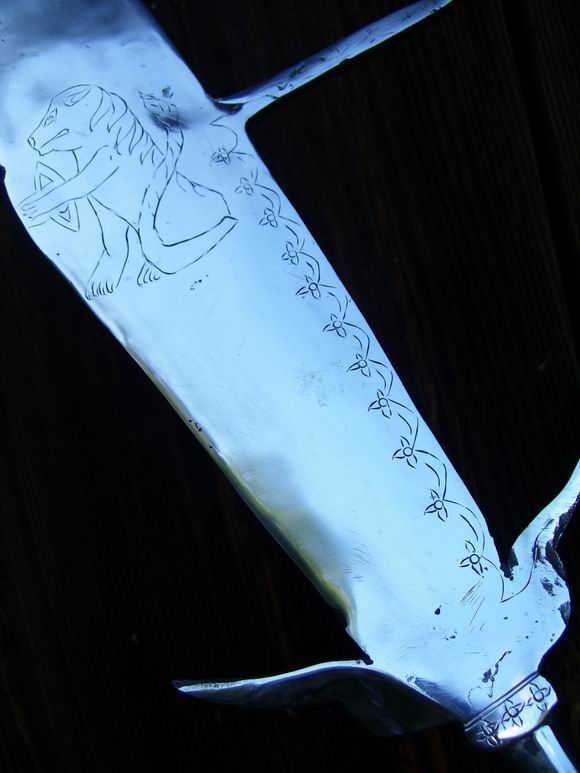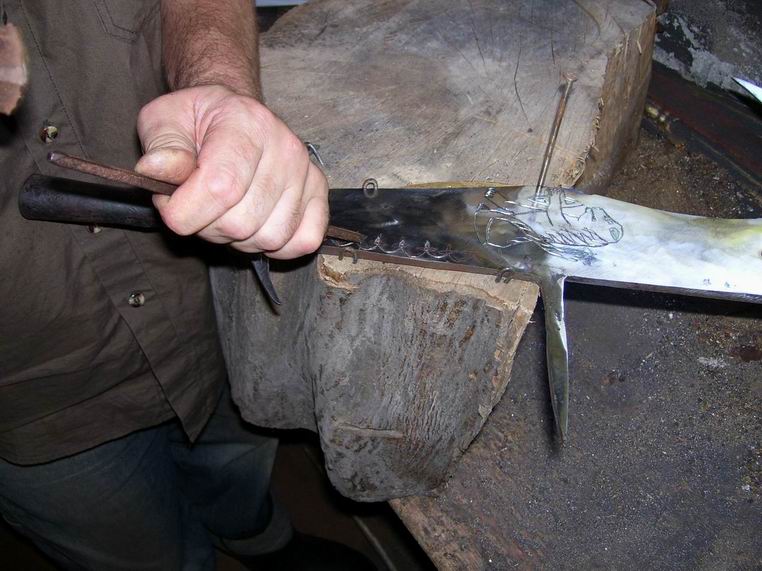Posts: 57 Location: Polska
Sat 20 Jul, 2013 4:06 am
Coat the gizarme.
Hi
In the description of the gizarme it says that the coat of arms on it was acid digested ........ it's probably a mistake.
In my opinion, this groove is definitely the stylus.
What do you think?
Ibor.
 Attachment: 71.77 KB
Attachment: 71.77 KB

Posts: 580 Location: Pennsylvania USA
Sat 20 Jul, 2013 9:12 am
its dated to the 1500 -1600 time period, well its not impossible that acids were used. by this time engraving was done on metal plates (usually copper or bronze) using a needle like tool and then mild acid applied to etch. the acid would sit in the lines of the drawing and eat away more of the material in order for the image to become deeper. this is normally applied to print making but i image the same can be done to other applications.
i think the level or engraving (actual depth of it) can tell more about how it was made.
Posts: 163 Location: Canada
Sun 21 Jul, 2013 6:28 am
I etch armour and make intaglio prints, and it looks undoubtedly like acid etching to me.
-Hildebrandt
Posts: 580 Location: Pennsylvania USA
Sun 21 Jul, 2013 10:24 am
from what i know of engraving - weather its print work or otherwise. i can say that an acid etching is probably an easier/ faster way to achiever the desired look or a hammered engraving when it comes to complex lines and close swirls. a really busy piece in other words. the acid will do most of the work, you just use your stylus to draw out the pattern, leaving only a light scratch.
hammered engraving - takes a ton of control. just to keep the chisel in a consistent depth takes a lot of learned skill in itself. not to mention the occasional distortion that close line work will cause. these days, many professional engravers use a numismatic engraving tool, which allows for some really detailed stuff.
Posts: 154 Location: La Crosse, WI
Mon 22 Jul, 2013 6:53 am
I just wanted to thank you for posting the photo. That's a beautiful piece.
Posts: 57 Location: Polska
Mon 22 Jul, 2013 7:53 am
Indeed, it is a nice photo ... and a beautiful gizarme.
I am in the process of forging.
See how it comes out ....... hahahahah
Yours.
Ibor.
Posts: 5,981 Location: Birmingham, Alabama
Mon 22 Jul, 2013 9:00 am
Yes, it's the earliest form of etching, in which the plate is covered with a resist and the design is scratched through the resist.
The later technique, typical of German pieces, involves painting the design with the resist, which leaves the main part of the design untouched by acid.
Posts: 57 Location: Polska
Sun 28 Jul, 2013 10:44 pm
You
cannot post new topics in this forum
You
cannot reply to topics in this forum
You
cannot edit your posts in this forum
You
cannot delete your posts in this forum
You
cannot vote in polls in this forum
You
cannot attach files in this forum
You
can download files in this forum





